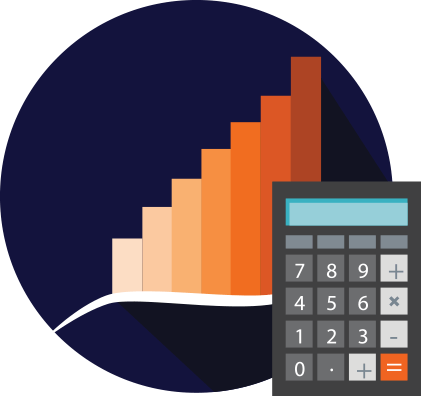As you save for retirement, one of the best ways is with a tax-advantaged account. The government will offer a tax break to encourage you to prepare for the future, so it makes sense to take advantage of it.
Two of the most common accounts you can use for retirement include the individual retirement account (IRA) and the 401(k). Let’s look at the IRA vs. 401(k) and how they can help you prepare for a prosperous future.
IRA vs. 401(k): The Basics
Both the IRA and the 401(k) are designed to help you save for retirement. They also come with tax advantages based on the type of account you get:
- Traditional: You receive a tax deduction for contributions you make. Your tax benefit is now. Later, when you withdraw from the account, you pay taxes at your regular rate. You must take minimum distributions once you reach a certain age.
- Roth: Contributions are made after you pay taxes. However, your money grows tax-free, and you don’t have to pay taxes when you withdraw money from your account during retirement. There are no minimum distribution requirements (the Roth 401(k) has been updated due to SECURE legislation).
Both types of accounts have different contribution limits for the year, and both allow those who are at least 50 to make extra catch-up contributions.
Finally, both the IRA and 401(k) provide a way for employers to help their employees with retirement benefits. Employers can also make contributions on behalf of their employees.
IRA vs. 401(k): Differences
Understanding the differences between these two accounts is also important, especially if you want to make sure you’re getting the most out of your retirement dollars.
Who sponsors the plan?
First, it’s important to understand who’s sponsoring the retirement account. A 401(k) is only sponsored by an employer. You can open a solo 401(k) — but only if you have a business and are self-employed.
In order to contribute to a 401(k), you must be employed.
On the other hand, an IRA is more versatile. Anyone with earned income can open an IRA. However, even though you can open a plan on your own, it’s also possible for employers to sponsor an IRA for employees.
If you have access to a 401(k), you can also open an IRA and contribute. This allows you to increase the total amount you put toward retirement.
Annual contribution limits
Another big difference between an IRA vs. 401(k) is the amount of contributions. Each year, the IRS sets different limits on how much you can contribute. Often, the IRS bases the limits on increases in the cost of living.
For example, in 2022, the limits were as follows:
- IRA: $6,000, with a catch-up of $1,000
- 401(k): $20,500 with a catch-up of $6,500
But in 2023, those limits increased:
- IRA: $6,500, with a catch-up of $1,000
- 401(k): $22,500, with a catch-up of $7,500
While there are some IRA and 401(k) variants that allow you to contribute more if you’re self-employed, for the most part, you can contribute more to a 401(k) than to an IRA.
Potential income limits
Another consideration is the potential for income limits if you want to make contributions.
If you want to contribute to a Roth IRA, you can’t make more than a certain amount of money each year. There are no limits for 401(k) accounts, even Roth accounts.
Additionally, a traditional IRA might come with restrictions on whether you can claim a tax deduction for your contributions. Depending on your income and whether you and a spouse are contributing to an employer-sponsored plan, you might be limited in taking a tax deduction.
With a 401(k), you don’t have to worry about these limitations. You can claim your deduction and you don’t have to worry about whether your income will limit your ability to claim those tax advantages.
Should You Choose an IRA vs. 401(k)?
Deciding what account to get doesn’t have to be a big deal. It’s possible to have both if you’re eligible to contribute to both.
Depending on your retirement strategy and situation, using both can help you reach your goals faster. For example, if you’re already maxing out your 401(k) at work and you want to contribute more, you can open an IRA.
Maybe you want to make Roth contributions, but you make too much to contribute to a Roth IRA and don’t want to go through the hassle of a backdoor Roth. You can contribute to a regular IRA and then make Roth contributions to a Roth 401(k) (if your employer offers a Roth account).
Others like the idea of receiving a 401(k) match but don’t like the investment choices in their employer plan. You can get the maximum match and then open an IRA to make contributions to a more flexible account or even potentially see lower fees.
Carefully consider your needs and goals, and then create a retirement investment plan that works for you.

